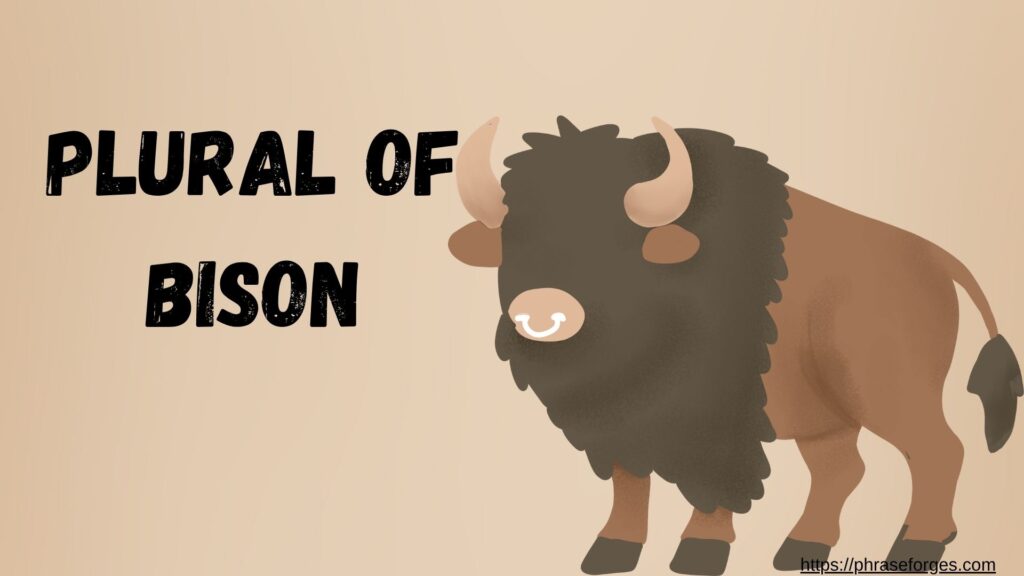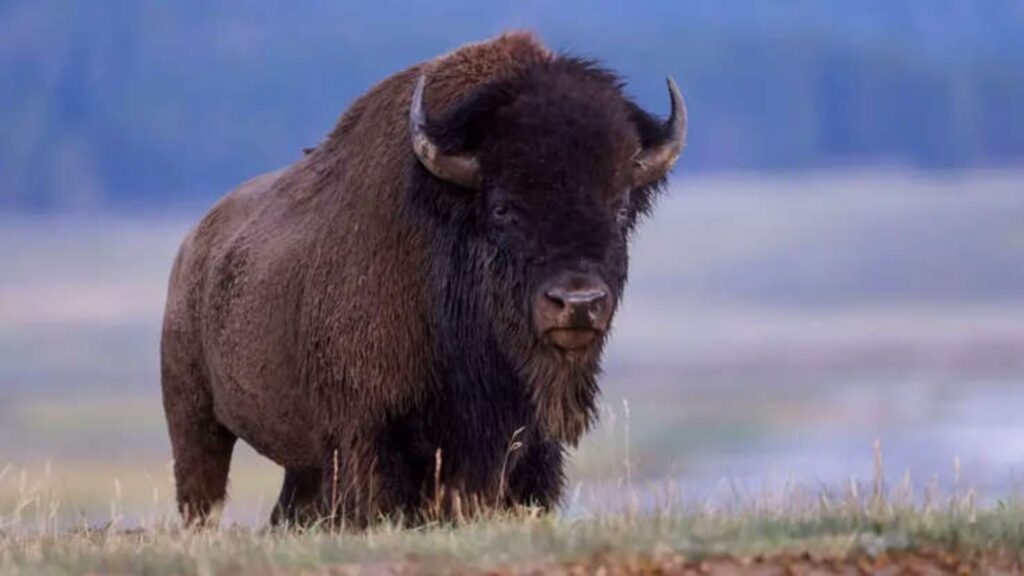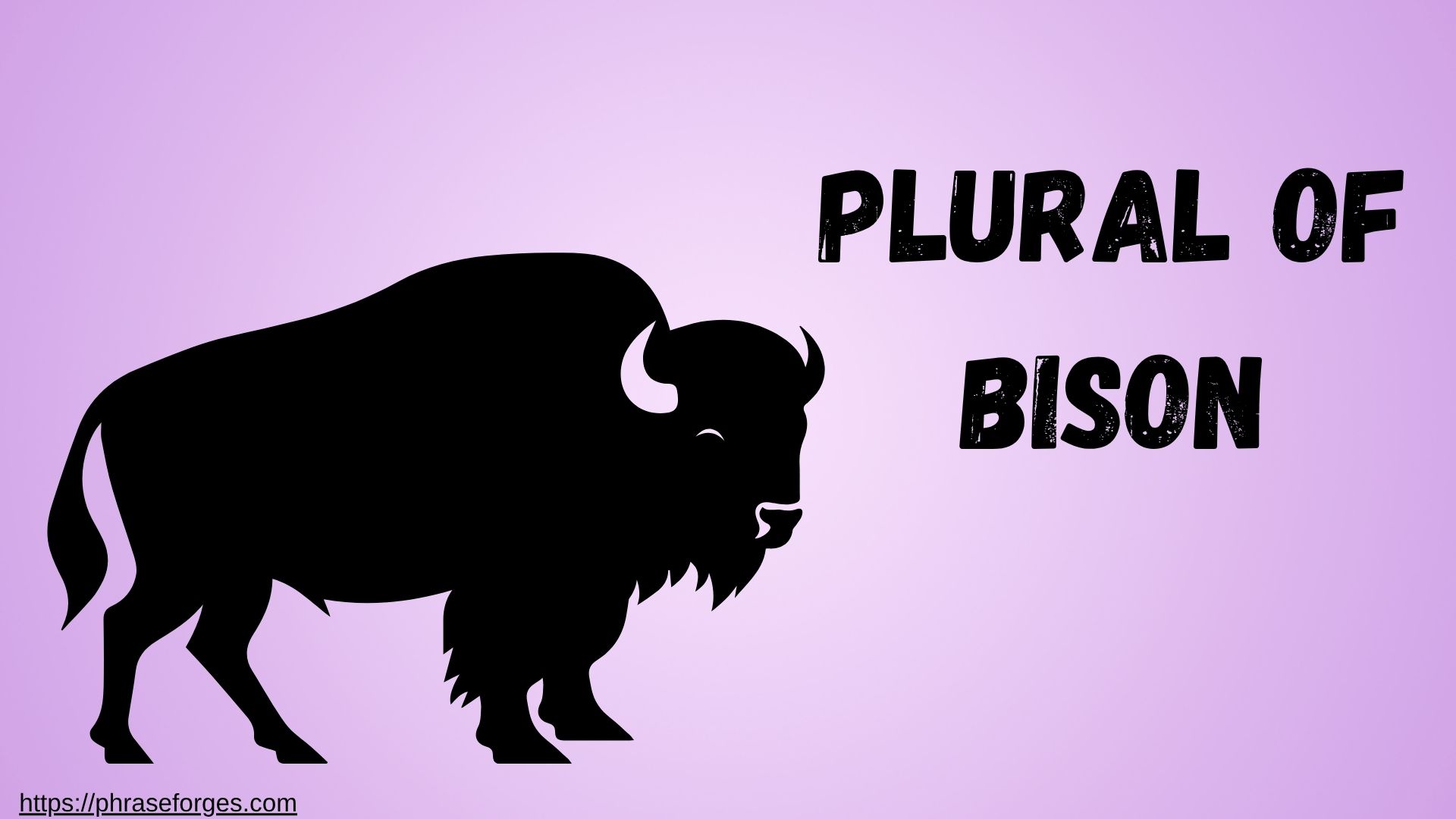If you’ve ever wondered “What is the plural of bison?”, you’re not alone. English is full of irregular plural nouns, and bison is one of those words that can be puzzling at first glance. So, is bison plural, or does it have a different plural form? Here’s the short answer:
✅ The word “bison” stays the same in both singular and plural forms.
That means you can say “one bison” or “several bison” without changing the word. This is similar to other invisible plural nouns in English, such as deer, sheep, moose, and fish.
Bison Singular and Plural: Quick Definition

The plural form of bison is simply bison. In grammar, this is called an unchanged plural noun a word that has the same spelling whether it’s singular or plural.
- Singular: There is a bison in the field.
- Plural: A herd of bison is grazing near the river.
This rule makes bison part of a group of singular and plural identical nouns, often used when referring to animals or collective species.
Why Is Bison Both Singular and Plural?
The reason behind this lies in English etymology. The word bison comes from Latin “bison”, which itself was borrowed from a Germanic word meaning “wild ox”. Over time, it entered English without adopting a separate plural ending.
Many animal names with the same plural and singular form follow this pattern, including deer, elk, and moose. These often describe herd animals, where the collective is more important than individual count.
Bison vs Bisons: Which Is Correct?
You might see “bisons” occasionally, but in standard English, this is considered nonstandard.
- Correct: The park rangers spotted five bison near the stream.
- Incorrect: The park rangers spotted five bisons near the stream.
While dictionaries recognize “bisons” as an extremely rare or archaic usage (especially in older texts), modern grammar rules and usage guides treat “bison” as both singular and plural.
Real-World Usage: Examples of Bison in Sentences
Here are a few examples of bison plural sentences in context:
- Singular: A massive bison blocked our car on the road to Yellowstone.
- Plural: We saw bison roaming freely across the plains.
- Plural (herd context): A herd of bison crossed the river together.
Scenario Example (Email):
Subject: Update: Wildlife Photography Trip
Hi Maria,
Yesterday was incredible! We drove through Yellowstone National Park and saw a herd of bison grazing near the valley. I even got a close-up shot of a lone bison standing apart from the rest majestic!
I also learned that the plural of bison doesn’t change just like deer or sheep. Fun fact, right? Can’t wait to share the pictures when I get back!
Best,
Kevin
Bison vs Buffalo: Understanding the Difference
People often confuse bison (American or European) with buffalo (water buffalo or Cape buffalo). While both belong to the bovidae lineage, they are distinct species:
- Bison (genus Bison): Native to North America and parts of Europe, with species like the American bison and European bison.
- Buffalo (genus Bubalus or Syncerus): Found in Africa and Asia, including the Cape buffalo and water buffalo.
This confusion also affects language: while buffalo also has an unchanged plural (like bison), their etymologies differ.
Study Tip: Remembering the Plural of Bison
Here’s a quick study tip:
Think of bison like deer or sheep. If you’d say “two deer” or “a flock of sheep,” you’d use bison the same way:
- ❌ Don’t add -s or -es.
- ✅ Use bison unchanged for plural references.
Scenario Example (Professional Context Email):
Subject: Wildlife Tour Planning – Important Notes
Hi Sophie,
I’ve finalized our itinerary for the upcoming tour in North America. Please remind the guides to clarify that “bison” is both singular and plural some guests tend to ask about bison vs bisons usage.
Also, include a fun fact in your briefing about bison herd behavior and their conservation efforts led by the Smithsonian National Zoo. Visitors love these details.
Thanks,
Dr. Marcus Lee
Wildlife Tour Coordinator
Other Irregular Animal Plurals Like Bison

The bison plural form isn’t unique. English includes several irregular plural nouns where the form doesn’t change:
- Deer (singular and plural)
- Moose (singular and plural)
- Sheep (singular and plural)
- Fish (often unchanged in plural, though “fishes” is used in biology)
These noun forms that stay the same often describe herd animals or species used in group contexts.
Quick Reference Table: Bison Plural vs Similar Nouns
| Animal | Singular Form | Plural Form |
|---|---|---|
| Bison | bison | bison |
| Deer | deer | deer |
| Moose | moose | moose |
| Sheep | sheep | sheep |
| Buffalo | buffalo | buffalo |
Examples in Conservation and Science
- The American bison is often seen in Yellowstone, where herds roam freely.
- The European bison (wisent) was once nearly extinct but has been reintroduced into forests in Europe.
- Hybrid species like beefalo (bison-cattle hybrid) and zubron (bison hybrid) reflect ongoing research into the genus Bos and its relation to cattle and yaks.
Here’s a sample usage:
“Conservationists are tracking several bison across North America to study migration patterns and protect their habitats.”
Common Mistakes to Avoid
- Adding “-s” (Bisons): ❌ Incorrect in standard usage.
- Confusing buffalo vs bison: These are separate species despite similar appearances.
- Assuming plural always changes: Remember, bison plural form stays the same.
Scenario Example (Classroom Email):
Subject: Homework Reminder – Animal Plurals
Hi Class,
For tomorrow’s quiz, remember that some animal names, like bison, sheep, and deer, don’t change in their plural form. So, “I saw five bison” is correct not “five bisons.”
We’ll also discuss the origin of the word bison and how it connects to irregular plural noun rules.
See you tomorrow!
Ms. Jenkins
Final Thoughts
The bison plural form is straightforward once you remember that bison stays the same in singular and plural. Whether you’re talking about one bison or a herd of bison, the word doesn’t change just like deer or sheep.
By understanding this, you’ll avoid common mistakes like saying “bisons” and feel confident when discussing this iconic animal of North America and Europe whether in casual conversation, academic writing, or professional contexts.

